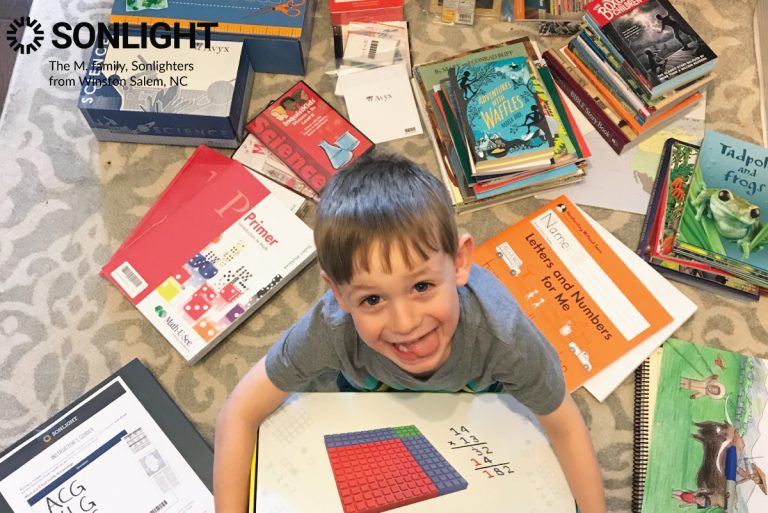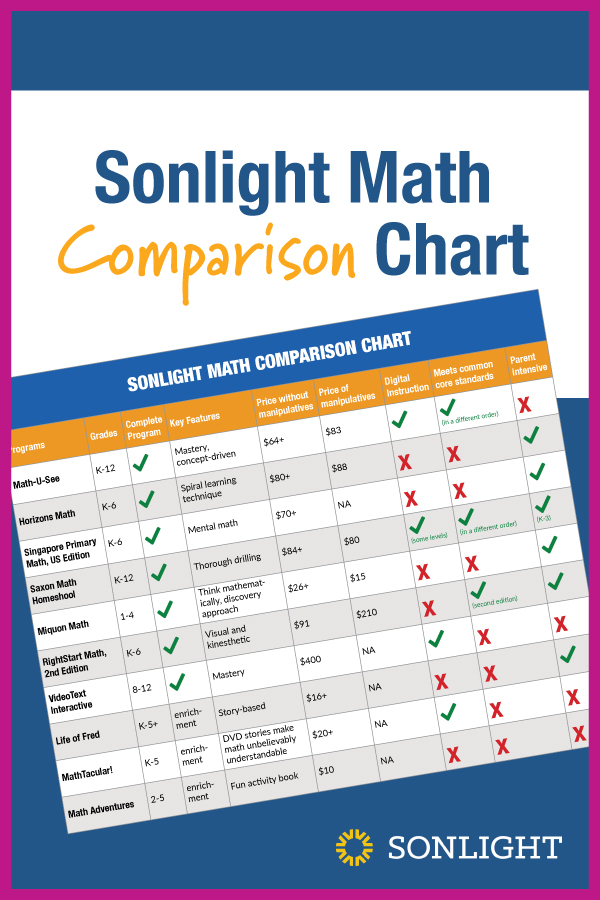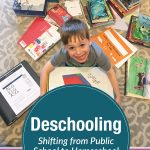
You’re toying with the idea of homeschooling. You’re beginning to imagine what it could look like to school at home instead of sending your kids back to public school.
You may be searching online for some school desks and chairs. You’re probably researching curriculum, and maybe you’ve even begun to map out what a day of school at home would look like.
Before you get too deep, let me give you some advice...
Your homeschool doesn’t have to look like a public school experience.
In fact, it really doesn’t need to. You have to understand that many public schools are great at what they do, but they teach to the masses. You aren’t teaching to the masses. You have an audience of one...or maybe a few more, but nonetheless, your school won’t need to be a duplicate of public school.
Your child is probably thinking the same type of things. If you’ve talked to them about homeschooling, they are likely beginning to visualize what that might mean. Different children react differently to the news of an educational shift. Some may be overjoyed while others may be resistant to the upcoming changes.
So what should you do to prepare yourself and your child for your new homeschooling journey? Here are a few tips to help shift your mindset from public school to homeschool.
1. Deschool for a Time
Yes, it’s a real word! I looked it up in the dictionary.
Deschooling is the process of phasing out of traditional schools and moving into alternative methods of education.
Deschooling can be very effective, and summertime is a great time devote to deschooling. During this time, you’ll want to allow your child free reign to explore what they want to explore. The goal is to let your child decompress from the stressors of school and just relax. This is particularly helpful for children who are uneasy or resistant about a switch to homeschooling.
You’ll want to focus on your relationship during this period of time, so your part during deschooling is to be sure to have lots of conversations, and spend plenty of time together relaxing and having fun.
You’ll probably be able to take your cues from your child as to when they are ready to begin formal learning again. This period of time lays a strong foundation for the parent-child relationship, and it prepares both of you for the task at hand.
Deschooling also helps you put some distance between you and your preconceived ideas of schooling, and it will help your child do the same. Your child is much less likely to say, “That’s not the way we do it at school,” when they have been out of school for a few months. Coming into homeschooling with an open mind will be beneficial to everyone.
2. Learn Your Child
I have always been a huge proponent of learning your child.
I believe that especially as homeschooling parents, we need to become students of our children.
We need to know what makes them tick, what inspires them, and what withers them. When we learn these things, we can develop a plan for teaching at home that is tailor-made for them.
Knowing what type of learner your child is will help you choose curriculum and schedule your day. For example, if your child is very active and has a short attention span, they would probably benefit from RightStart Math, which is a hands-on math curriculum involving shorter lessons, minimal paperwork, and plenty of tactile opportunities. On the contrary, if your child is more solitary and enjoys working independently and quietly, they will likely enjoy Horizons Math. If your child is very logical, they would probably be a good fit for the Singapore Math program.
Of course, don’t panic over these choices! Your biggest job now is to learn your child. Once you do that, you can call Sonlight Advisors to help you choose the curriculum that best fit your child. (Their advice is free.)
Are you wondering how to become a student of your child? Well, while I tend to go with more informal mental notes about my children, you may prefer list journaling. Your list journal may include things that make your child light up, things that make your child sad, and even a list of favorite books and activities will help you develop a good synthesis of your child.
You might even create a mind map including all that you learn about your child’s personality. These are just a few suggestions. The main idea is to study your child. Learn their personality and their likes and dislikes. This will help you make informed decisions on curriculum and schedules and will set you up for success from the start.
3. Develop a Plan for (and with) Your Child
In studying your child, did you learn that they love to read upside down, hanging off the couch? Maybe you learned that they like to draw curled up on the swing outside. If so, your child probably won’t do much of their work in a school desk. You’ll probably want to plan for flexible work areas. You’ll probably want to make a mobile caddy that holds supplies so they can do their lessons anywhere they like.
On the contrary, if your child loves working independently and having a set space to do their work, they may enjoy having a designated work area that looks more like a traditional desk set-up.
You may want to meet with your child and have them help you develop a daily routine for homeschooling. You might start the conversation like this:
- Do you like doing the hardest things first or the easiest?
- What would you like your school day to look like?
From these questions, you may discover that your child would rather work hard for a few hours and have the rest of the day to play, or you may discover that your child would prefer several breaks in the day. Equipped with this knowledge, you’ll be able to break out of the typical school schedule and create a flexible schedule that embraces your child’s strengths.
4. Break Out of the Worksheet Mindset
Most of us grew up with tons of worksheets and textbooks, and don’t get me wrong...I loved worksheets, but not everyone thrives with them.
Some public schools use a lot of worksheets and textbooks because it’s an effective way to teach a lot of children at one time. But you aren’t in the same position. You have a significantly smaller class size which will allow you to do much more oral discussion. You won’t need a worksheet or a book report to tell you if your child read the assignment. You’ll be able to talk about the book with them.
As a homeschooler, there is far less need for worksheets. If you choose Sonlight curriculum, you’ll also learn that a lot of learning happens with living books instead of the traditional textbook. In reality, learning happens all the time, everywhere, not just in worksheets and textbooks.
You CAN teach your kids at home! A well-planned curriculum makes it so easy, and you can trust that you are giving your kids all the academics they need.











Thank you for this article, I found it super helpful especially the point about 'learning your child' I think this is so important.